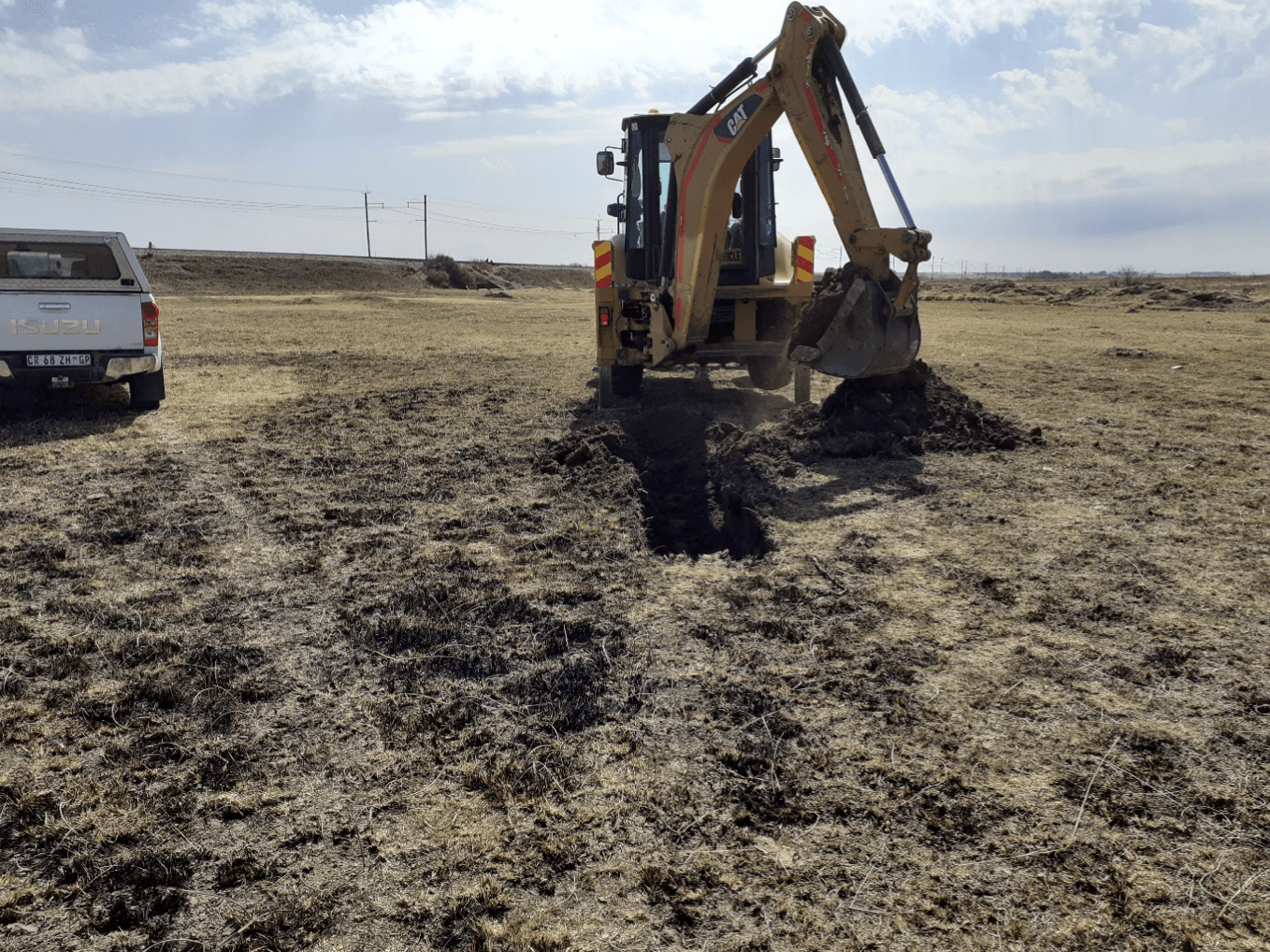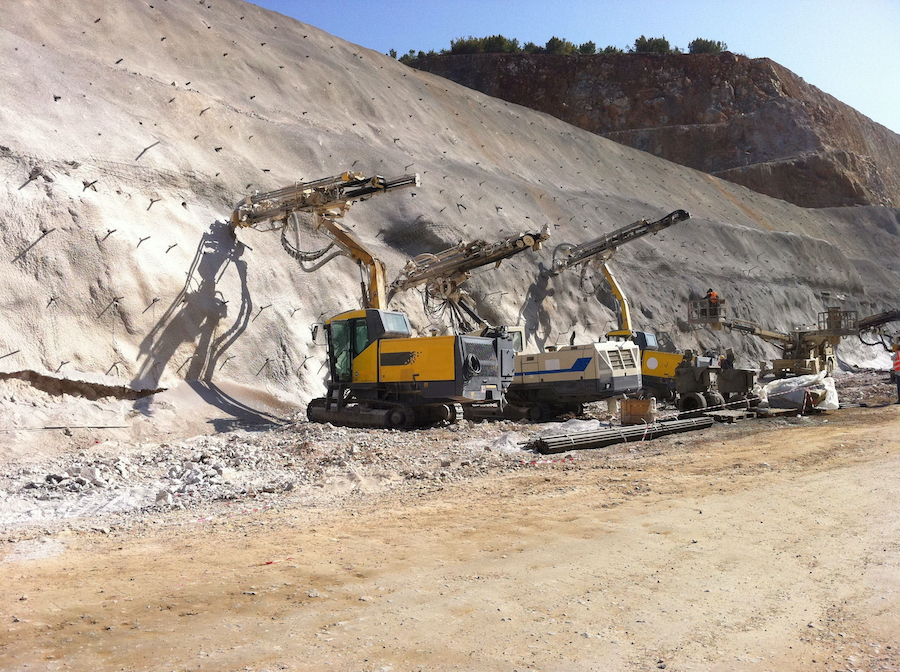Geotechnical Engineer Description: What to Expect from These Experts
Geotechnical Engineer Description: What to Expect from These Experts
Blog Article
A Thorough Introduction of Geotechnical Engineering Techniques and Their Influence On Modern Civil Engineering Projects
Geotechnical engineering serves as the foundation of modern civil design, supplying vital techniques that address the complexities of subsurface conditions. The interplay of soil analysis, structure layout, and innovative modern technologies forms the stability and sustainability of framework tasks.
Value of Geotechnical Design
Geotechnical design functions as an essential foundation for civil engineering tasks, influencing the safety and security and stability of structures. This self-control focuses on the actions of soil and rock products, giving vital understandings that guide the design and building and construction processes. By recognizing the communication between the planet and crafted frameworks, geotechnical designers can evaluate risks connected with ground problems, such as negotiation, slope security, and liquefaction.
The value of geotechnical engineering extends beyond simple structural honesty; it plays a vital duty in ecological protection and sustainability. Appropriately carried out geotechnical assessments guarantee that projects lessen their eco-friendly footprint and abide by regulatory demands (all about geotechnical engineering). Geotechnical engineering is crucial in website option, allowing designers to determine suitable locations for building and construction that minimize possible threats.
On top of that, geotechnical design cultivates development in civil engineering by advancing methods for ground improvement, structure design, and excavation. The self-control's payments are vital in addressing challenges presented by varying soil problems, hence helping with secure and effective framework advancement. On the whole, the relevance of geotechnical engineering is vital in ensuring that civil engineering tasks are not only possible yet also resilient against natural and synthetic adversities.
Secret Techniques in Geotechnical Design

Another crucial strategy is dirt stablizing, which entails modifying dirt homes to improve load-bearing capacity or minimize settlement. Methods such as adding concrete, lime, or using geosynthetics are commonly made use of to accomplish soil renovation.
Ground enhancement techniques, consisting of dynamic compaction and vibro-replacement, are likewise important. These methods aim to compress loose or soft dirts, improving their stamina and lowering liquefaction capacity in seismic areas.
Keeping frameworks, such as sheet piles and soil nailing, are employed to support excavations and stop soil movement. Incline stablizing techniques, consisting of drainage systems and keeping wall surfaces, are crucial for reducing landslide threats.

Dirt Analysis and Testing Methods
Reliable dirt analysis and testing approaches are vital for recognizing the chemical and physical residential properties of dirt, which straight affect engineering decisions. An extensive analysis of soil attributes is important for forecasting actions under various loading problems and ecological influences.
Common dirt testing approaches consist of both field and research laboratory strategies. Area examinations, such as the Standard Penetration Test (SPT) and Cone Infiltration Test (CPT), give instant insights into soil thickness, stratification, and strength. These examinations assist engineers evaluate site problems efficiently prior to more considerable lab evaluations.
Lab screening techniques, such as Atterberg restrictions, grain dimension circulation, and compaction examinations, are vital for identifying soil plasticity, moisture material, and optimal compaction levels. Moreover, progressed methods like triaxial examinations and consolidated undrained (CU) examinations provide important information on shear stamina and efficient anxiety parameters - geotechnical companies in south africa.
Chemical testing, including pH, electrical conductivity, and organic material analysis, is likewise vital for understanding possible dirt contamination and its effect on building materials. Collectively, these soil evaluation and testing approaches develop the foundation of notified decision-making in geotechnical design, making certain the security and security of modern-day civil engineering jobs.
Foundation Layout Approaches
Foundation layout methods are critical in guaranteeing the security and long life of frameworks. These methods can be classified into superficial and deep foundations, each fit to certain soil conditions and filling scenarios. Superficial foundations, such as spread footings and floor covering structures, are typically used when surface dirts have adequate bearing capability. They distribute the tons over a bigger location, lessening negotiation risks.
In comparison, deep foundations, consisting of stacks and drilled shafts, are utilized when surface dirts are insufficient or weak for supporting the structure. These structures transfer tons to much deeper, more secure dirt or rock layers, my link making them vital for high-rise structures and bridges in challenging geotechnical problems.
Choosing the suitable foundation layout includes complete geotechnical examinations, including dirt structure, bearing capacity, and groundwater conditions. Designers have to take into consideration aspects such as settlement, lateral lots, and possible seismic activity to make sure the structure's efficiency over time.
Ultimately, a well-executed foundation style is a pivotal aspect of civil engineering, directly influencing the security, longevity, and performance of structures. geotechnical specialist. By straightening structure types with site-specific conditions, designers can efficiently minimize threats associated with foundation failure
Innovations Forming Civil Design

Sustainable materials, such as high-performance concrete and recycled accumulations, are additionally acquiring grip, promoting eco-friendly practices while preserving structural honesty. Furthermore, progressed geotechnical techniques, such as ground renovation and deep blending approaches, are enhancing the stability of foundations in difficult dirt conditions.
Furthermore, making use of drones and remote sensing innovation is improving website monitoring and surveying, supplying real-time data that help in managing building and construction progress and security. The execution of innovative building and construction approaches, such as prefabricated and modular building, further expedites project timelines and lowers waste. Collectively, these developments are not only changing civil design methods yet also making sure that contemporary infrastructure satisfies the demands of a growing international populace while attending to ecological issues.
Conclusion
In conclusion, geotechnical design methods are indispensable to the success of modern-day civil design tasks. By utilizing these techniques, engineers can mitigate threats and add to the advancement of durable urban environments, ultimately promoting sustainable growth and security in try this out civil design practices.
Geotechnical engineering offers as the foundation of modern civil engineering, supplying vital techniques that attend to the complexities of subsurface conditions.Geotechnical engineering serves as an essential structure for civil engineering tasks, influencing the safety Go Here and security and security of structures.In enhancement, geotechnical engineering fosters technology in civil design by advancing techniques for ground improvement, structure style, and excavation. Generally, the significance of geotechnical design is critical in guaranteeing that civil engineering projects are not only feasible however also resilient against synthetic and all-natural misfortunes.
In conclusion, geotechnical design techniques are integral to the success of modern-day civil design tasks.
Report this page